15 Home Maintenance Tasks and Repairs Everyone Should Know How to Do
There are a few types of homeowners in the world—those who like to call professionals for home maintenance, those who can handle some home repairs themselves, and those who consider themselves a "handyman."
No matter where you fall on the spectrum, you'll likely encounter household maintenance tasks that require a professional and others small enough that you don't need to speed dial your handyman.
We're setting you up for a lifetime of self-sufficiency when it comes to maintaining your home. Take advantage of this DIY knowledge and conquer fifteen common household problems. You can do this!
But we're also letting you off the hook a little. There's always a time and a place for professionals. If your home problems fall into these categories, it’s time to make a phone call.
 Home Maintenance and Repairs to Tackle on Your Own
Home Maintenance and Repairs to Tackle on Your Own
Learning the tips and tricks to keep your house running smoothly is empowering for homeowners and renters. Often, it allows you to save money and get things done quickly rather than waiting for a handyman’s availability. Thankfully, a few minutes of reading or watching a how-to video should bridge the gaps in your home maintenance repertoire.
1) Learn to shut off the main water supply.
The main water valve controls the water supply for your entire home. An overflowing toilet doesn't necessitate using the main water valve (you can use the knob on the wall behind it), but it is vital for emergencies. A burst pipe, leak, or plumbing repair might require you to shut off all the water.
To find your main water shut-off, start outside. An on/off connection could be attached to an outside wall. Also, look in the basement, garage, utility room, or closet.
2) Unclog a sink or drain.
You may nave never thought to use a plunger outside the bathroom. Grabbing the same one you use in the toilet for unmentionable events is not a great idea, but a secondary plunger is an excellent tool for a clogged sink or bathtub.
3) Clean front-load washers and dryers.
You may not think about cleaning the appliances that clean everyday items. But when you don’t take care of your washer, it stops doing its job correctly, and your clothes are worse for wear. On average, it's best to clean your washer once a month. Front-load washers are a breeding ground for mold and mildew because they never completely dry after running a cycle.
Set your washer to the hottest, longest cleaning cycle (some washers have a self-cleaning cycle), add two cups of vinegar and a quarter cup of baking soda, then let it run through the process. After, add a little water and use a scrubby sponge to wipe down the inside of the drum and rubber seal.
Dryer maintenance is even more straightforward. Aside from clearing out the dryer vent, which you should do before or after each load, you should also clean the dryer duct. Unplug the dryer, pull it away from the wall, and vacuum lint in the duct. Replace the duct or tubing if there's damage.
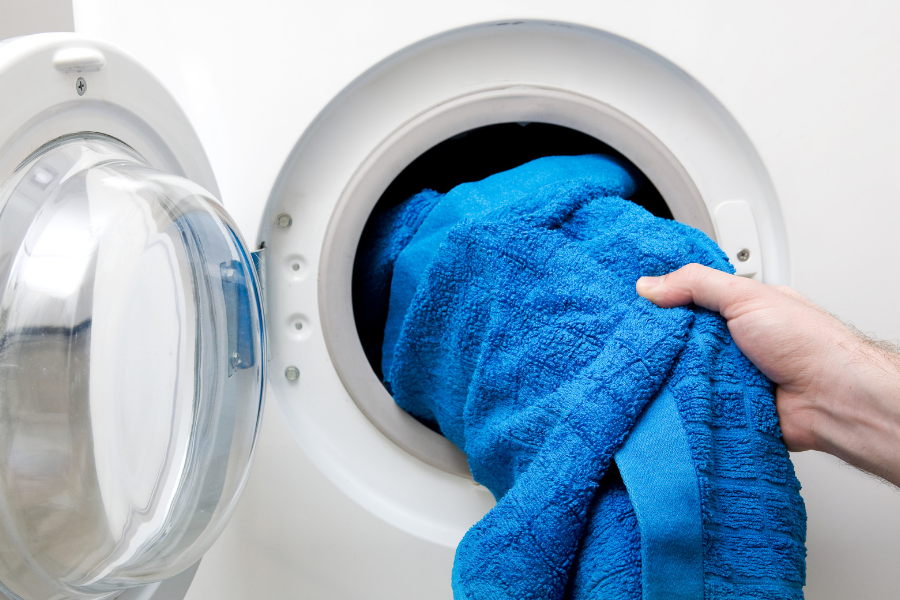
Photo from Canva
4) Re-caulk.
Water from sinks and showers produces a lot of moisture in the bathroom. The humidity affects how effectively the caulk protects the drywall and prevents mold growth. While we're not surprised by the presence of mold and mildew in the bathroom from time to time, all caulk reaches a point when it's past the point of cleaning and needs to be replaced.
Remove the old caulk with a sharp tool and mineral oil or vinegar. Next, tape the area that needs to be re-caulked, similar to painting trim in a bedroom or living space). With a caulk gun, apply the caulk to the desired location. Finish by smoothing the line with a gloved finger or an ice cube to get a smooth, concave surface.
5) Clean the garbage disposal.
If your sink has a sickening smell, you’re not alone—it's a common issue. Most kitchen sinks are used and abused, so show them a little TLC when you can. And there’s no reason to call for help because the solution is simple.
Kill the odor by pouring half a cup of baking soda and half a cup of vinegar down each side of the sink. Leave and go about your other chores (or stick around to see the fizz action). After a few minutes, flush everything down with hot water.
Tip: put the stopper in before the foam spreads beyond the disposal.
If the smell persists, try other methods like citrus peels or ice and vinegar. You might need to get your hands dirty and clear the drain trap yourself or call a professional.
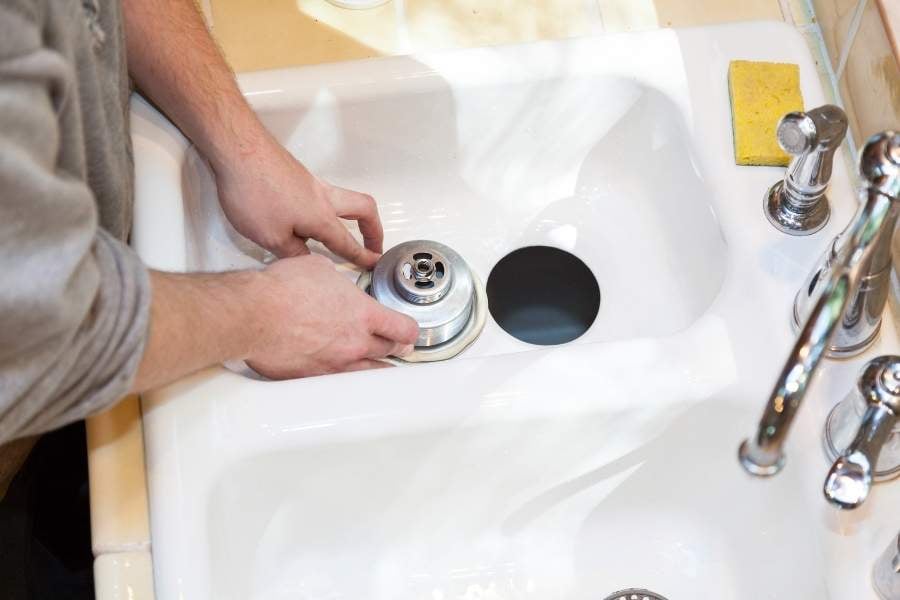
Photo from Canva
6) Clean the dishwasher.
Food and grease residue in the dishwasher is normal. But, if left to build, that residue will leave your dishes dirty and smelly.
Once a month, fill a cup with vinegar, place it in a dishwasher-safe container on the upper rack, and run a cycle. Don’t forget to clear the drain. Trapped food deteriorates, stinks, and clogs the line.
7) Clean gutters and downspouts.
Gutters exist to collect rainwater and direct water away from the roof and foundation. However, they don’t function well when clogged with leaves and debris. This can lead to a rotting or damaged foundation and create holes for pests to enter your home.
A couple of times a year, especially after the fall season, clear your gutters. A leaf blower or wet-dry vac works well for this. If you’re not comfortable using a ladder, you can find attachments for your leaf blower to reach the gutters with both feet firmly planted on the ground.
8) Install household weatherproofing.
When you were growing up, you probably heard your parents say, “I’m not paying to air-condition the whole neighborhood!” as you left a door open in your haste to play outside or run inside for a snack.
Gaps around windows and doors in your home operate in the same way. They’re certainly not as blatant as an open door, but they allow the loss of the precious cold air you’re paying for and, more noticeably, the heat in the winter. If you feel a cold draft when you walk past the front door, you likely have a gap and need to install weather stripping.
The hardest part of installing weatherproofing products is knowing which kind you need. There’s a variety of items, including strips, sheets, and putty. This article by This Old House helps to sort out the options. And if you’re still unsure, seek a department expert at Lowe's, Home Depot, or your local hardware store.
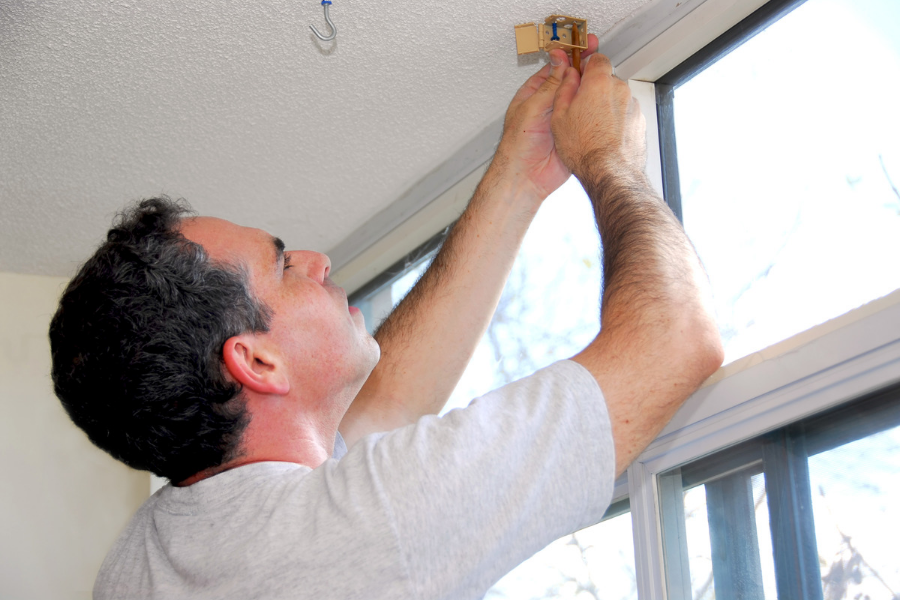
Photo from Canva
9) Fix sticky drawers.
Everyone has had one of these drawers that needs an excessive yank, rattle, or pull. If you’re tired of the effort or your technique no longer works, you can fix this minor issue with a small purchase and a few minutes.
The first thing to try is wax. Paraffin wax is located near the canning supplies at the grocery store or online. Just rub the wax on the edges of the drawer where it sticks. If that doesn’t work or the drawer starts to catch again after some use, purchase nylon tape and run it on the drawer or the shelf where it rubs.
10) Replace air filters.
Replacing the air filter is that annoying chore we frequently forget to do. And maybe that’s because we don’t consider how important it is. Did you know that air filters help support the longevity of your HVAC unit? They also impact the energy efficiency of your home and help prevent mold.
It’s imperative to replace air filters, including ground-level return air vents, every thirty days. If they work with your system, look for filters with a ninety-day lifespan or that are reusable, assuming you’ll clean them regularly.
11) Patch a hole in the wall.
Wall scrapes, dings, and holes are common nuisances in a home. Rehanging pictures, moving furniture, and kids playing a little rough inside the house all promote wall damage.
If it’s just a small ding or hole from a screw or nail, use a quick-drying spackle to fill, sand to smooth, and cover with touch-up paint.
If it’s significant damage, head to the hardware store to buy a patch kit. They’re easy to purchase and simple to install. You’ll spend less than an hour filling the hole but longer to paint as the spackle must be dry.
12) Replace a light fixture.
Brass, brushed nickel, shiny silver—these hardware finishes come and go out of style. Whether you're looking to update the fixture or it’s broken and needs replacing, you may be able to make this fix yourself.
To start, shut the power off to the fixture. Since it shouldn’t require any rewiring, this is a simple matter of matching connections and securing the fixture to the ceiling.
13) Pressure wash.
Have you ever used a pressure washer? The effect is satisfying, and while it can be time-consuming, it’s well worth the effort. If you don't own one or have a friend to borrow one from, home improvement stores often have them available to rent by the hour or day.
Pressure wash your fence, siding, driveway, patio, or deck, and watch the transformation from dirty and gray to clean and bright. This type of wash is popular to remove outdoor mildew stains as well.
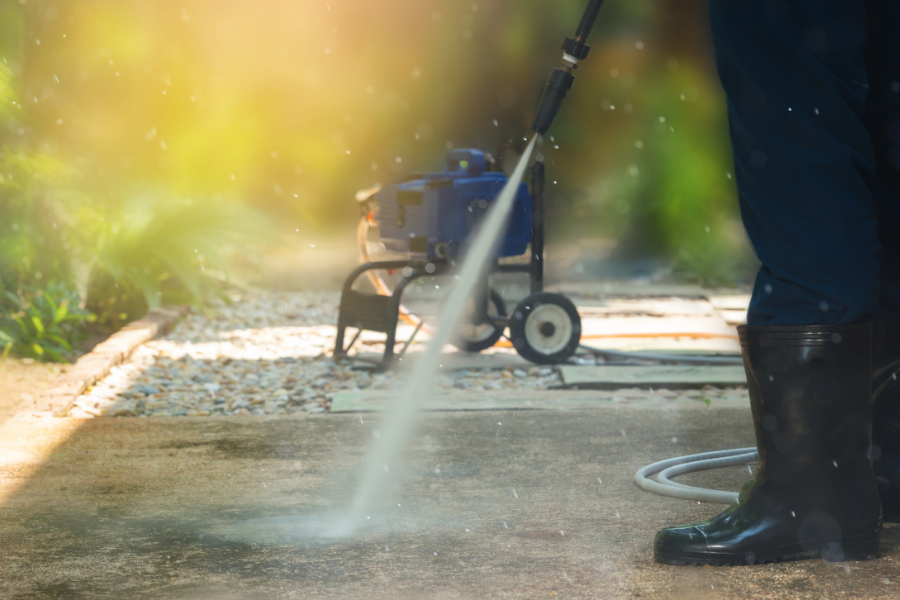
Photo from Canva
14) Replace a window screen.
A torn or broken window screen is a very common household chore. Dogs, kids, and, sometimes, rogue birds puncture and tear a screen. Luckily, it’s an easy repair you can do without breaking the bank.
Remove the old screen from the frame, cut the new screen to size, leaving two inches wider than the frame, and pull the screen tight over the edge. Next, push the excess screen into the channel using a screen roller. Last, wedge the spline into the channel to secure the screen and finish by trimming the extra material.
15) Replace outlet covers.
Replacing an outlet cover is as simple as unscrewing and replacing a few screws. For a fast and inexpensive upgrade, either repaint the outdated cover color or purchase entirely new covers with a modern style.
When You Shouldn't Do Your Own Home Repairs
Learning to handle tasks around the house without help is worthwhile for saving money and cultivating skills that are transferable from house to house. That said, without professional training, you shouldn’t try and fix everything.
If the outcome could result in extra damage, costing you exponentially more, or severely injuring yourself (or the house), it’s better to let a professional handle the repair.
Home repairs to leave to the pros:
- Electrical rewiring
- Asbestos removal
- Mold removal
- Major plumbing
- Roofing
- Structural changes or modifications
- Pest infestation
- Water damage
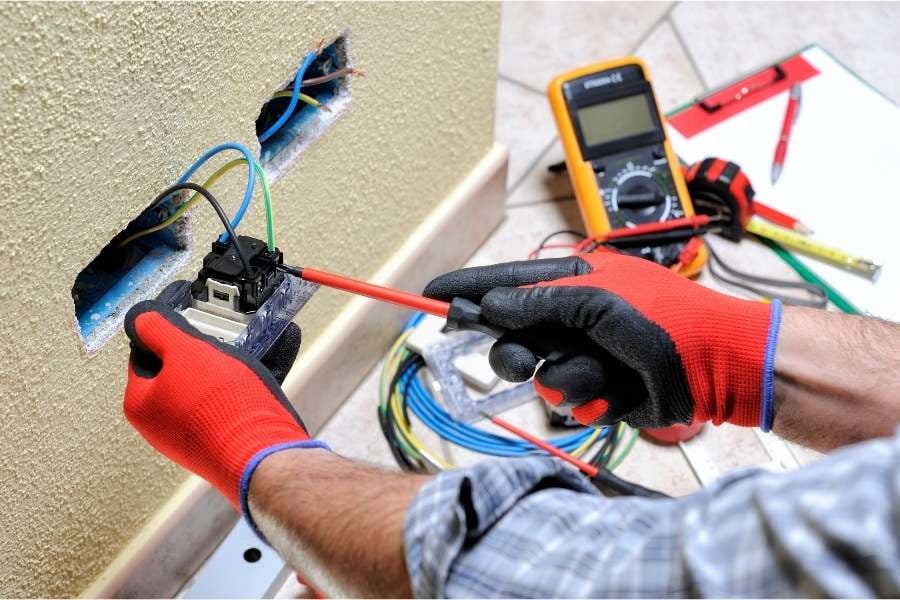
Photo from Canva
More Home Maintenance Help
For a solid foundation and a leg up on preventive home maintenance, here’s a collection of information to follow:
- YEAR ROUND MAINTENANCE: Keep up with home maintenance chores all year long with this checklist.
- SPRING HOME MAINTENANCE CHECKLIST: Spring brings with it unpredictable weather. Use this checklist now to avoid problems later.
- SUMMER HOME MAINTENANCE CHECKLIST: Summer is the perfect time to pay attention to inside and outside household chores.
- FALL HOME MAINTENANCE CHECKLIST: Fall maintenance is important because it’s the foundation for securing your home against rain, snow, and dipping temperatures.
- WINTER HOME MAINTENANCE CHECKLIST: Time to prepare and get your home ready for winter.
It’s time to take your handyman off speed dial and get comfortable with your ability to tackle home maintenance tasks. Keep in mind that not every task is suitable for a DIY approach. It's best to evaluate the cost and risk with any home repair you dive in head first.
Need a confidence boost to start the home maintenance momentum? Download our free easy checklist for fall home maintenance below.





